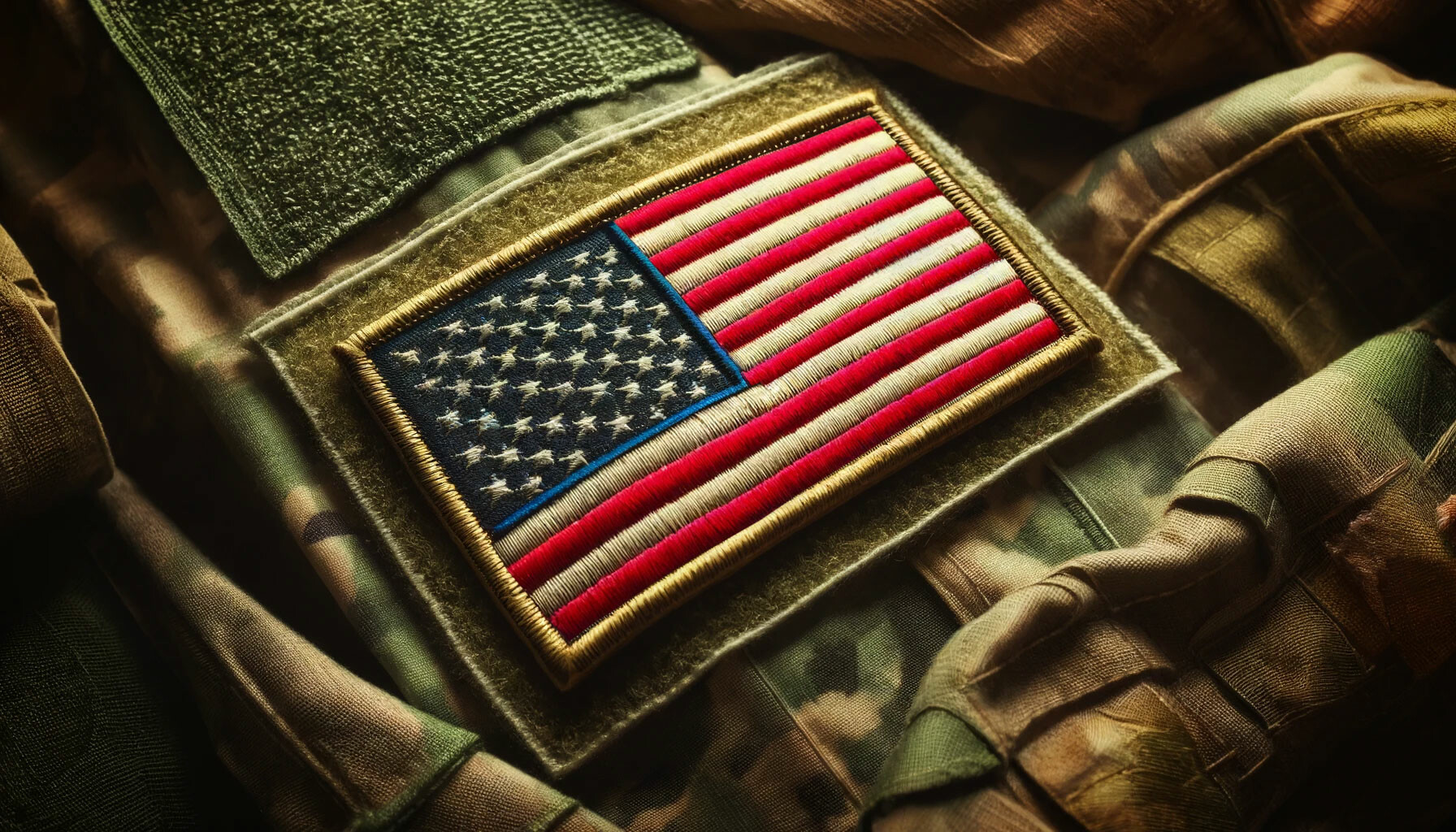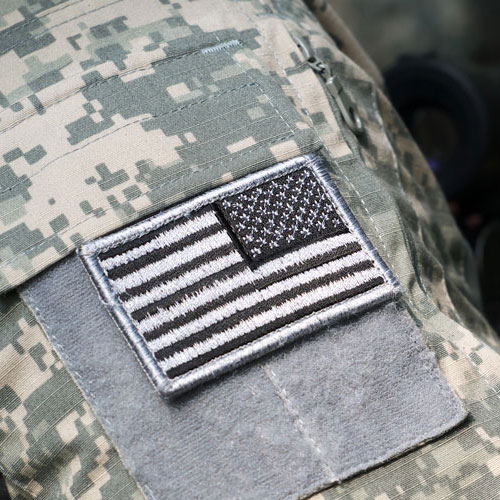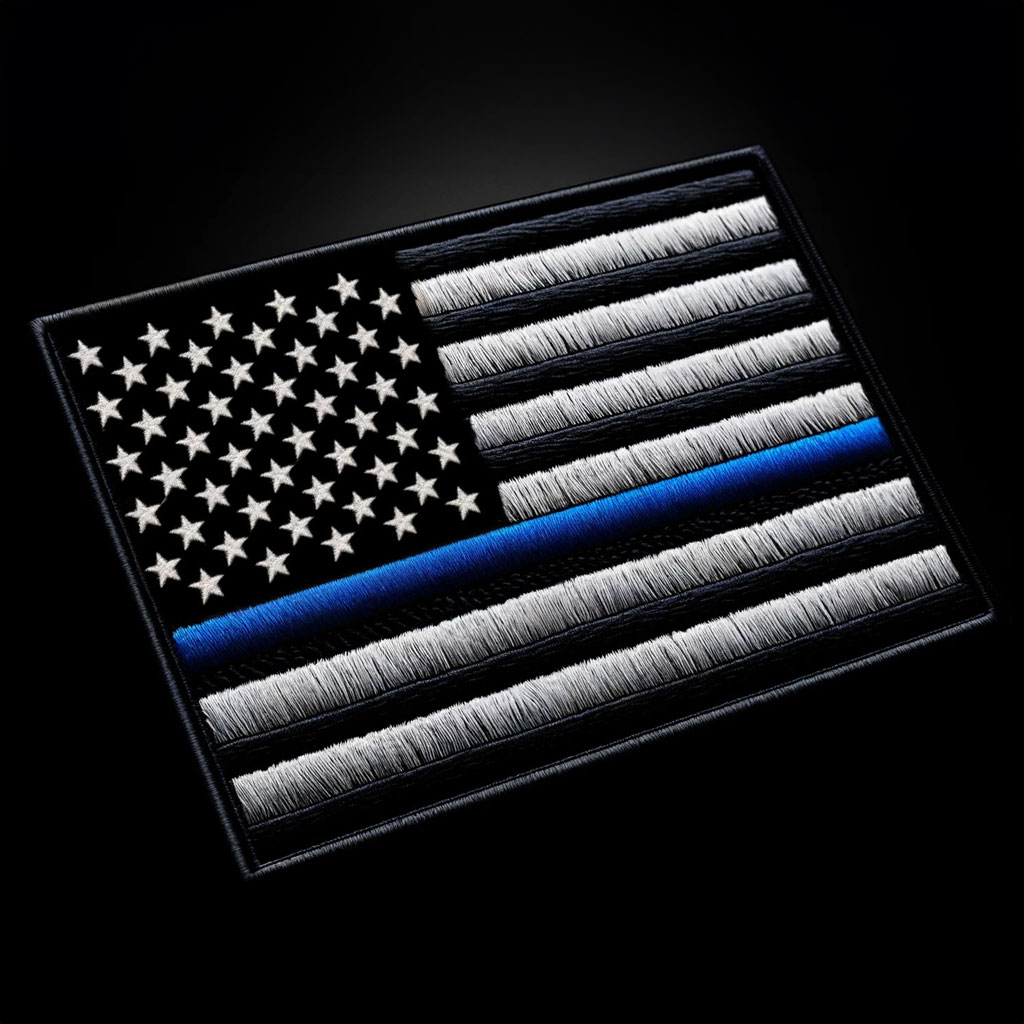
A Guide to Flag Patches
Flag patches are an essential part of military and civilian uniforms worldwide. Here's how to attach and wear them properly.
You probably won’t be surprised to discover that one of the most popular patch designs we sell here at Patches4Less.com is the flag patch. They’re immensely popular for uniforms, whether to show military service, national pride, support for first responders or other concepts.
Flag patches have long been an integral part of military gear for many nations. But they’re also a very popular patch type for civilians as well, for multiple reasons.
Let’s take a look at where flag patches are worn, their representative colors and why the flag you might think is being worn “backwards” actually is correct.
Flag Patches 101
A flag patch is a simple thing, just a piece of cloth depicting a nation’s, state’s or organization’s flag. They’re a common sight around the world.
National flags are the most common type, worn by members of a country’s military members. Others wear them as well, including Olympic athletes, first responders, sprots teams and others who represent their country in the performance of their duties.
Many others wear flag patches as well. Olympic athletes, police and fire department members, sports teams and others wear them as well. Some people like to wear flag patches on hats or jackets to show their patriotism and national pride. Others apply flag patches to backpacks or luggage to show their home country when traveling internationally.
National flags are the most common style, but not the only ones. State public service agency uniforms such a state police might have state flags as well. Others feature variations on national flags such as “Thin Blue Line” flag patches to show support for police officers, or “Thin Red Line” to show support for firefighters.
Military Flag Patches: The Basics
Military uniforms are the most common place you’ll likely see American flag patches. There are a few facts about U.S. military uniform flags that might surprise you.
When Did Flag Patches Become Mandatory?
You might think flag patches have always been an aspect of U.S. military uniforms. That’s not quite right. Flag patches didn’t become a mandatory part of the uniforms until 2005.
Army regulations state “All soldiers will wear the full-color U.S. flag embroidered insignia on utility and organizational uniforms, unless deployed or in a field environment. Soldiers will wear the subdued tactical flag insignia while deployed or in a field environment.”
Which leads to our next topic:
Military Flag Patch Colors
United States military personnel commonly wear the standard red, white and blue Stars and Stripes. However, those bold colors stand out in the field, making the wearer a more visible target for hostile forces.
For that reason, soldiers deployed in the field wear subdued flags that blend in with camouflage uniform colors. Those patches depict the flag in various combinations of black, light gray, dark gray, tan and brown. All make the flag harder for enemy forces to spot.

Why are Flags on the Right Shoulder Backwards?
You might have noticed military personnel wearing flag patches on their right shoulder that appear to be “backward,” with the field of stars to the right side.
We’re accustomed to seeing the flag displayed with the stars on the left when looking straight at it. And that’s the way it’s shown when worn on the left shoulder.
But the right shoulder flag patch isn’t really backward at all. The flag is facing the way it would if being carried into battle, a custom dating to the Civil War.
When a flag is carried into battle, the field of stars (known as the union) faces forward at the top left corner, the stripes streaming to the rear. This position became known as “assaulting forward” and represents the courage and determination of the soldiers marching forward.
Therefore, the union always faces in that direction, including when worn on the right shoulder. If it were depicted with the union facing rearward, it would appear to symbolize retreat.
Army Regulation 670-1 emphasizes that point, stating that “the correct and only way to wear the U.S. flag patch on a uniform is with the stars facing forward.”
Civilian Flag Patches

Of course, flag patches aren’t limited to just military members. Many first responder agencies such as police and sheriff’s departments, fire departments and emergency medical services include flag patches as a standard uniform attachment. Although they sometimes vary the style, most follow the military tradition of keeping the flag’s field of stars facing forward.
Schools and universities, especially those with a significant military connection, also include flags on student uniforms. Businesses also have been known to do so as well.
Flag Patch Types
Flag patches are available in several patch types. Embroidered patches are the most common style.
This patch type embroiders the flag image onto a twill backing, with the design thread typically covering the entire backing material. They tend to be the most economical patch type, with very good durability.
Woven patches use a thinner thread than embroidery. This patch type allows a smaller image without losing text legibility or image clarity. They tend to be less durable than embroidered patches, which might be a concern in some applications.
PVC patches are printed and don’t use thread, so they allow the most flexibility in design and color options. They are likely to be a bit more expensive than the other patch types, but they allow designs that might not be possible on embroidered or woven patches.
Methods of Attachment
You can attach flag patches in several ways, including iron-on, sew-on and tape. Hook-and-loop fasteners (Velcro®) allow the most flexibility of any attachment method.
With Velcro, you can quickly attach or remove patches from any garment. That makes it easy to transfer your flag patch from one uniform to another. It also gives you the ability to switch from a standard color to a subdued patch almost instantly.
If you prefer a more permanent attachment, sew-on and iron-on patches work best. Sew-on patches offer a truly secure, permanent attachment that will last for the life of the garment. Iron-on patches offer fast, easy attachment with no sewing skills required.
Tape backing is available, but is best suited for single-use events such as conferences or conventions. It’s not meant for permanent installation, and will not withstand laundering.
Custom flag patches serve multiple purposes, whether denoting military service, national pride, league membership, or other principles. If you need custom flag patches, Patches4Less.com is your reliable source. Call or email us to find out how easy we make ordering custom patches of all kinds.